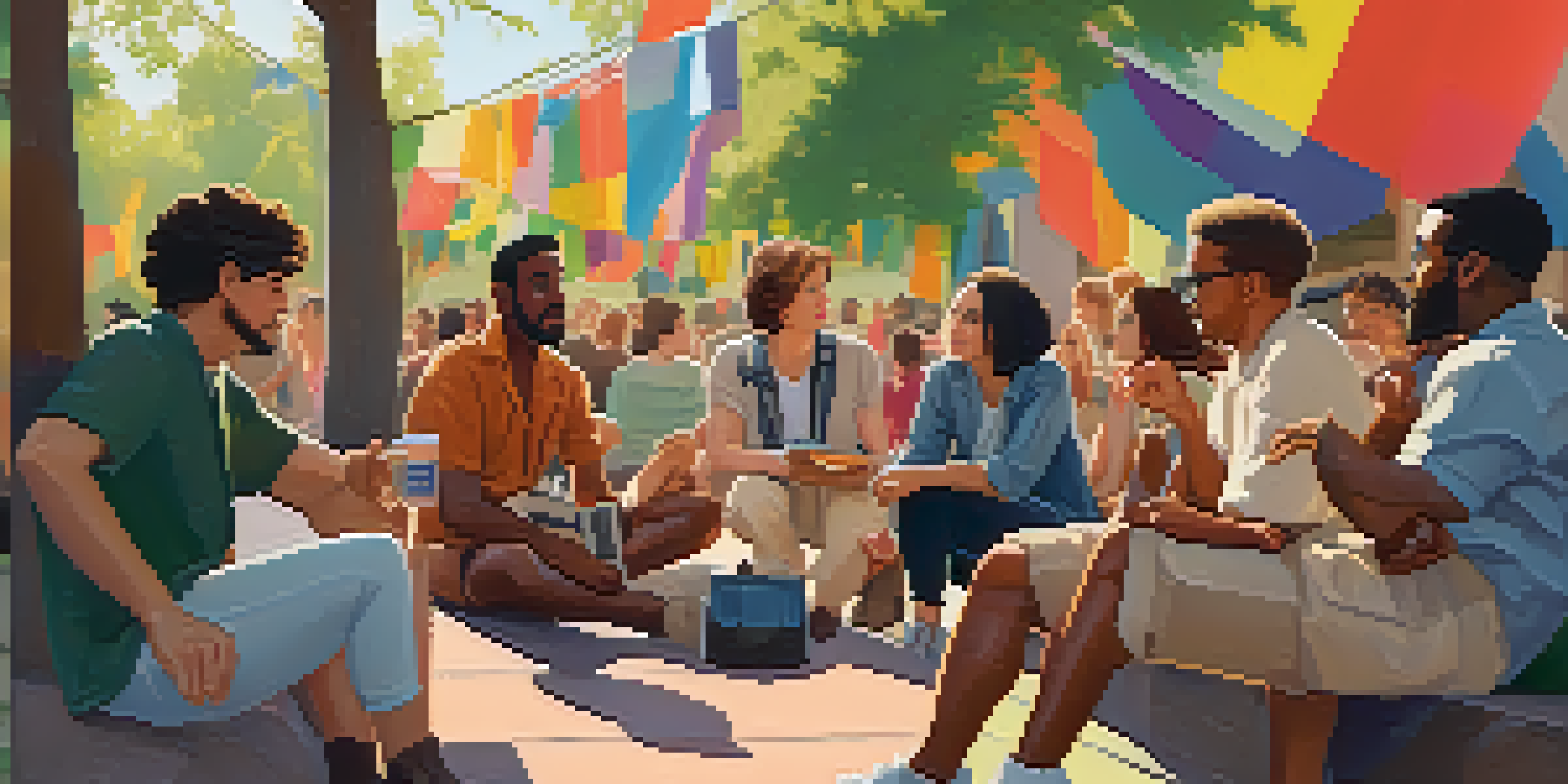Emerging Voices: Diversity in Contemporary Film Criticism

Understanding Diversity in Film Criticism Today
Diversity in film criticism is more than just a buzzword; it's a necessity. As cinema evolves, so do the voices that analyze and critique it. In contemporary film criticism, we're witnessing a shift where previously underrepresented perspectives are gaining prominence, enriching the discourse surrounding film.
Diversity is being invited to the party; inclusion is being asked to dance.
This inclusivity allows for a broader range of experiences and interpretations, reflecting the multicultural society we live in. Critics from diverse backgrounds bring unique insights that challenge traditional narratives, offering audiences a more nuanced understanding of films. Thus, the landscape of film criticism is becoming a richer tapestry of voices.
Ultimately, recognizing and valuing this diversity is essential for fostering a more comprehensive and empathetic film culture. As film continues to shape societal views, having a variety of critics ensures that multiple viewpoints are heard and celebrated.
The Rise of Marginalized Voices in Film Criticism
In the past, film criticism has often been dominated by a homogenous group, but that's changing. Today, we see more critics from marginalized groups stepping into the spotlight, sharing their unique perspectives on films that resonate with their experiences. This shift is not just refreshing; it’s vital for the evolution of film criticism.

For instance, platforms like social media have empowered these voices, allowing them to reach wider audiences without the gatekeeping traditionally associated with mainstream media. As a result, critics can share their thoughts on films that may not appeal to mainstream audiences but are rich in cultural significance and innovation.
Diversity Enhances Film Criticism
Incorporating diverse perspectives in film criticism enriches the discourse, reflecting our multicultural society.
The impact of these emerging voices is profound; they challenge the status quo and encourage audiences to rethink what constitutes a 'good' film. By diversifying the conversation, these critics not only highlight overlooked films but also broaden the horizons of what filmmakers can create.
Impact of Social Media on Film Criticism Diversity
Social media has revolutionized many industries, including film criticism. It provides a platform for emerging critics to share their insights and reviews, often bypassing traditional media outlets. This democratization of film commentary allows diverse voices to flourish, as anyone with a passion for films can contribute to the conversation.
The power of representation can change the narrative and help create a culture that is more inclusive.
Platforms like Twitter, Instagram, and TikTok have become spaces where critics can engage with audiences in real-time, fostering community discussions around films. This immediacy not only amplifies diverse perspectives but also creates a feedback loop where critics can refine their viewpoints based on audience reactions.
Moreover, social media enables critics to connect with filmmakers directly, leading to more meaningful dialogues about representation and storytelling. This connection can inspire filmmakers to consider broader perspectives in their work, ultimately benefiting the film industry as a whole.
Challenges Faced by Diverse Film Critics
Despite the progress made, diverse film critics still face numerous challenges in the industry. From biases in mainstream publications to the pressure of being seen as representatives of their entire communities, the road is not always smooth. This added pressure can be daunting, often leading to self-doubt and a reluctance to share their voices.
Moreover, many critics from marginalized backgrounds encounter difficulties in gaining access to screenings and industry events, limiting their ability to participate fully in the discourse. This lack of access can prevent diverse perspectives from being included in reviews and discussions, perpetuating existing inequalities.
Social Media Empowers Critics
Platforms like social media have democratized film criticism, allowing marginalized voices to reach wider audiences.
However, these challenges also highlight the importance of creating supportive networks for diverse critics. Initiatives aimed at mentorship, education, and amplification can empower these voices, helping them navigate the hurdles while contributing meaningfully to the film criticism landscape.
The Role of Film Festivals in Promoting Diversity
Film festivals serve as critical platforms for showcasing diverse voices, both in filmmaking and criticism. Many festivals now prioritize inclusivity, providing spaces for underrepresented filmmakers and critics to share their work. This focus on diversity not only enhances the festival experience but also enriches the discussions that arise from these films.
For example, festivals like Sundance and Tribeca have recognized the importance of highlighting films from various cultural backgrounds, which in turn fosters a more diverse audience. As critics engage with these films, they bring their unique perspectives, creating a ripple effect that encourages more inclusive criticism.
By promoting diverse narratives and critics, film festivals help shift industry standards and expectations, making it clear that diverse stories deserve to be told and valued. This shift is essential for the growth of the film industry and for fostering a more inclusive film culture.
Future Trends in Diverse Film Criticism
Looking ahead, the future of film criticism appears promising as more diverse voices continue to emerge. As audiences increasingly demand representation, critics from various backgrounds will play a crucial role in shaping film discourse. This trend suggests a future where diverse perspectives are not just welcomed but expected in the conversation.
Moreover, as technology progresses, we may see even more innovative platforms arise that cater specifically to diverse critics, allowing them to share their insights more broadly. These platforms can serve as incubators for new ideas and discussions, pushing the boundaries of traditional criticism.
Challenges for Diverse Critics
Despite progress, diverse film critics face significant challenges, including bias and limited access to industry events.
Ultimately, the evolution of film criticism towards inclusivity will foster a richer cinematic landscape, where a multitude of stories and voices can coexist. This transformation will not only benefit critics but also filmmakers and audiences who crave authentic representation.
Conclusion: Embracing Diversity in Film Criticism
In conclusion, embracing diversity in contemporary film criticism is not just a trend; it’s essential for the growth of the industry. The dynamic voices emerging within this space enrich our understanding of cinema and reflect the multifaceted society we live in. By valuing these diverse perspectives, we can foster a more inclusive film culture.
As critics continue to challenge traditional narratives and share their unique insights, audiences will benefit from a broader range of interpretations and experiences. This evolution is crucial for ensuring that all voices are heard and celebrated within the film industry.

Ultimately, the journey towards a more diverse film criticism landscape is ongoing, but the strides made thus far are promising. By supporting and amplifying these voices, we can create a film criticism environment that is as vibrant and diverse as the films themselves.